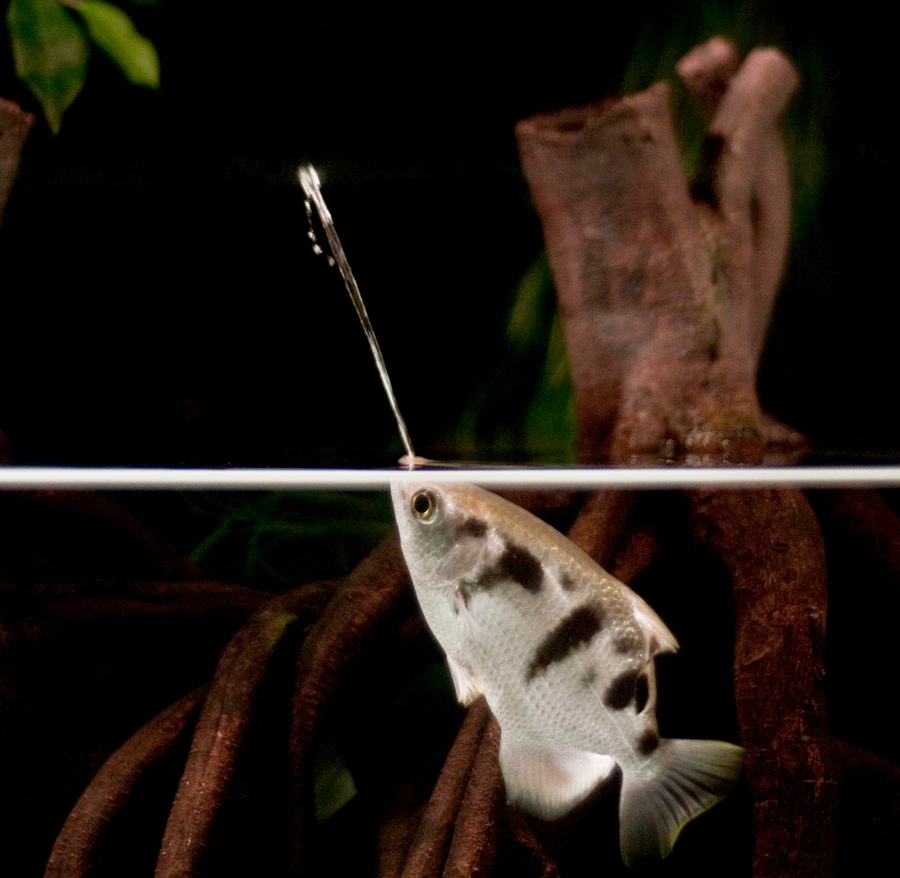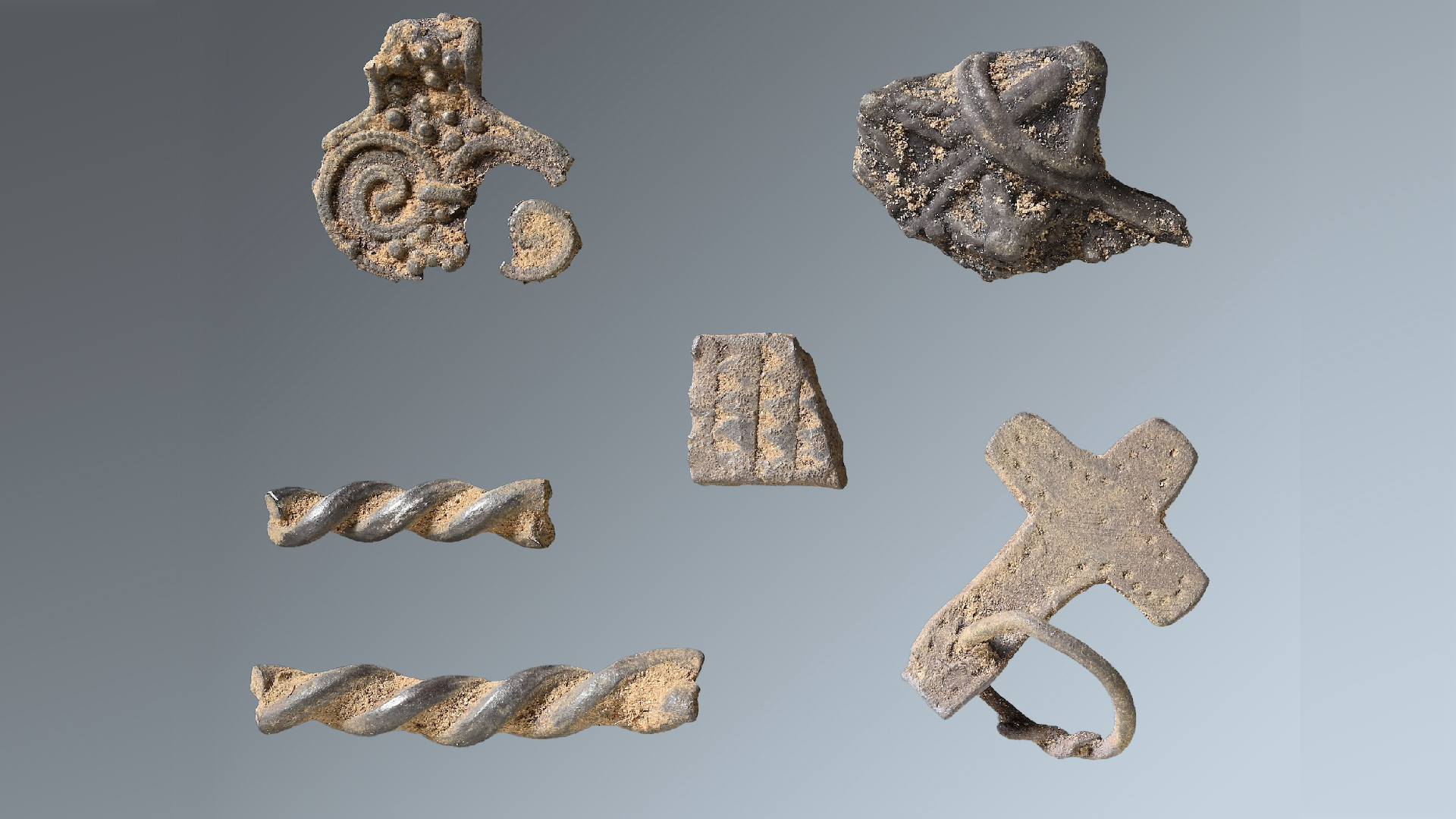Super Soaker! Spitting Fish Target Prey with Amazing Aim

Asia's zebra-striped archerfish "shoot" their prey with streams of water that they use as a tool, a new study finds.
Archerfish aren't the only fish that use tools; the Pacific orange-dotted tuskfish uses rocks to crush clamshells. But archerfish are the only fish known to use adjustable jets of water as tools, according to the new study, published today (Sept. 4) in the journal Current Biology.
The fish can shoot land-based prey — including insects, spiders and even lizards — off of leaves and branches and into the water from a distance of up to 6.5 feet (2 meters) away. Previous research had found that the fish gather the water between the tongue and the roof of the mouth, forming a gun-barrel-like shape before spitting it out in powerful streams. In the new study, the researchers found that the fish modulate these jets so that the water is focused into a powerful point before impact — a talent that would seem to require a lot of brainpower. [See Video of the Water-Shooting Archerfish]
"One of the last strongholds of human uniqueness is our ability to powerfully throw stones or spears at distant targets," study researcher Stefan Schuster, an animal physiologist at Germany's University of Bayreuth, said in a statement. "This is really an impressive capability and requires — among many fascinating aspects — precise time control of movement. It is believed that this ability has forced our brains to become bigger, housing many more neurons to afford the precision. With the many neurons around, they could be used for other tasks, apart from applying them for powerful throws. It is remarkable that the same line of reasoning could also be applied to archerfish."
Photo and video analysis revealed that the fish managed to focus their jets of water so that a thick slug (like a bullet) formed right before the stream hit the prey. These "jet tips" were indistinguishable to the eye regardless of how far the total jet of water had traveled, the researchers reported.
The fish appeared to control the jets through the opening and closing of their mouths. The longer the fish's mouth was open (and thus, the longer the duration of water release), the farther the jets traveled before focusing. The fish released water for an extra 3.4 milliseconds per every 3.9 inches (10 cm) of distance. However, the researchers added, the fish moved their mouths continuously throughout the process, creating a sort of "active nozzle" for shooting water.
That fact is interesting from an engineering standpoint, Schuster said, as adjustable jets are used in industries from medicine to manufacturing. Water jet cutters can even slice through steel or granite, when the water is mixed with tiny abrasive particles. Archerfish could provide a new model for making these water jets, Schuster suggested.
Sign up for the Live Science daily newsletter now
Get the world’s most fascinating discoveries delivered straight to your inbox.
The biggest problem is how to modify the abrasive properties of a jet," he said. "Usually, this is done by modulating the release pressure or by varying the abrasives added to the jet. We are not aware of someone actually using a dynamically adjustable valve."
Follow Stephanie Pappas on Twitter and Google+. Follow us @livescience, Facebook & Google+. Original article on Live Science.

Stephanie Pappas is a contributing writer for Live Science, covering topics ranging from geoscience to archaeology to the human brain and behavior. She was previously a senior writer for Live Science but is now a freelancer based in Denver, Colorado, and regularly contributes to Scientific American and The Monitor, the monthly magazine of the American Psychological Association. Stephanie received a bachelor's degree in psychology from the University of South Carolina and a graduate certificate in science communication from the University of California, Santa Cruz.
